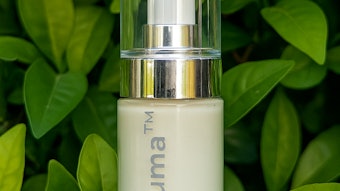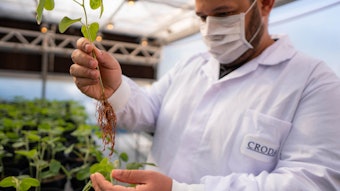
Introducing new technologies is crucial to connect with beauty consumers always on the lookout for the latest thing, and the more unique the technology, the deeper the potential brand/consumer connection. Osmoprotection, a recently recognized new therapeutic methodology, offers new solutions for topical problems that relate to skin aging—including collagen synthesis, intracellular inflammation prevention, antioxidant protection, free radical scavenging, de novo DNA synthesis, control of wrinkles and fine lines, skin brightening, age spot reduction and acne.
Cells must maintain an optimal balance of water to stay plump and healthy. Imagine a face drawn on a balloon and filled with water. The face will look plump and youthful as the water keeps pressure on the balloon’s inside surface. But if the water were to slowly leak (osmosis) out of the balloon, the drawn face would increasingly look wrinkled, tired, saggy and aged.
Similar loss of internal cellular pressure due to water loss causes osmotic stress, resulting in aged looking skin.
Osmoprotectant ingredients are the wave-of-the-future answer to this critical cellular water pressure balance.
Osmoprotectants are small molecules that help organisms survive extreme osmotic stress. These molecules accumulate in cells, and balance the osmotic difference between the cell’s surroundings and intracellular fluid. While use of humectants and emollients has been an age-old practice, the application of osmoprotection for multifunctional skin and hair care formulations is relatively new.
The agents known to provide osmoprotection in non-mammalian organisms and plants include (but are not limited to) trehalose, maltose, sucrose, palatinose, cellobiose, gentiobiose, turanose, sorbitol, calcium chloride and certain amino acids such as proline and alpha-glutamate.
Hyperosmolarity, the condition of a fluid of having abnormally high osmolarity, induces inflammation via the secretion of proinflammatory cytokines. The production of inflammatory cytokines causes the acceleration of the aging process. [For more on inflammation and its role in aging skin, read “Inflammation and Aging” on Page 48] Treatment with anti-inflammatory agents provides symptomatic relief to several aging-associated diseases, and the demand for new ingredients and technologies for preventive treatments continues to expand. Among them are the use of osmoprotective agents for anti-aging skin care.
New Osmoprotective Agents
The leading potential source for new osmoprotective agents stems from sucrose, trehalose, maltose, cellobiose, gentiobiose, turanose and palatinose that are very unusual osmoprotectants for Sinorhizobium meliloti (a soil bacterium that forms nitrogen-fixing nodules on the roots of certain genera of leguminous plants). Interestingly, these compounds were catabolized (released energy that resulted in the breakdown of materials within the organism) and contributed to accumulation of endogenously synthesized osmolyte. Created within the bacterium, it is known as N-acetylglutaminylglutamine. Findings from the study of this bacterium provided new insights for the role of N-acetylglutaminylglutamine and related compounds in cellular osmoprotection. In addition, delivery is being addressed in compounds such as aloesin, a compound isolated from aloe vera juice extracts that is complexed with N-acetylglutaminylglutamine, for example—for enhanced topical penetration.
Although the relationship between osmoprotection in lower life forms to humans has not been established, the use of bacterial protection agents for human skin care applications has precedence—ingredients in Kiehl’s Abyssine, for example, are obtained from thermophilic bacteria and tubeworms. And it is clear that continually seeking new concepts to innovate products is a must to continue to create excitement and engage consumers; osmoprotective agents are among the exciting technologies that are sure to engage while addressing to that age-old problem—skin aging.
Shyam Gupta is a consultant in skin and hair care ingredients and topical delivery systems. He specializes in nature-and-science - based formulations with enhanced efficacy and consumer desirable performance attributes. 1-602-996-9700; [email protected]; www.biodermresearch.com
Linda Walker is the president of CoValence Laboratories, a premier skin care manufacturer of chirally correct skin care products. 1-480-897-0551; [email protected]; www.covalence.com










